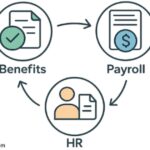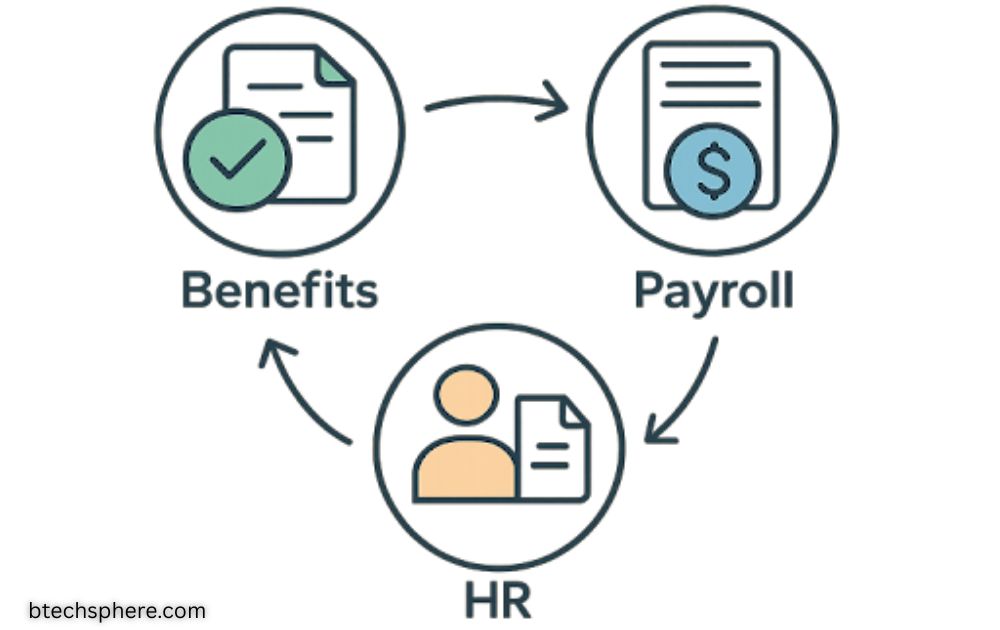In an age where operational efficiency is crucial, seamless integration across benefits, payroll, and human resources (HR) systems has become a strategic imperative. Organizations rapidly embrace these unified platforms to reduce manual effort, minimize errors, and create a more agile HR function. The move toward connected technology also enhances the employee experience, allowing staff and HR professionals to focus on higher-value work instead of administrative burdens.
Centralized systems facilitate transparency and data accuracy, proving invaluable during critical processes such as open enrollment. This is particularly true when organizations seek solutions to streamline open enrollment and maintain compliance in a dynamic regulatory landscape. As a result, employees and HR teams benefit from simplified workflows and more reliable information sharing.
The ability to synchronize benefits administration, payroll processing, and employee records helps companies accurately manage data at scale. Mishandling these interrelated areas often leads to costly mistakes and negative impacts on workforce satisfaction. Therefore, integration is a technical enhancement and a driver of organizational wellness and performance.
Data consistency ensures business leaders and HR departments operate from a single source of truth, powering more informed decision-making. Additionally, these integrations are critical for addressing today’s challenges, like hybrid workplaces and the growing demand for personalized benefits packages.
Understanding System Integrations
System integration in the context of HR, payroll, and benefits refers to the technological connection between disparate programs and databases. Instead of handling each system independently, integration allows the automatic data transfer between platforms such as benefits administration tools, payroll software, and HR information systems (HRIS). This linked approach eliminates duplicate data entry and ensures vital information—such as new hires, pay changes, or benefits updates flows consistently throughout the organization.
Well-implemented integrations use application programming interfaces (APIs) or third-party middleware to enable seamless system communication. When orchestrated correctly, HR staff enjoy a holistic view of employee data, and employees gain easy access to everything from payslips to health benefits—all from one interface.
Benefits of Integrating Benefits, Payroll, and HR Systems
- Enhanced Efficiency: Automating the flow of information between benefits, payroll, and HR means repetitive administrative tasks are reduced or eliminated. HR professionals can redirect their attention from error-prone data entry to strategic workforce planning and talent management.
- Improved Accuracy: By maintaining a single, accurate record of employees, integrated systems help organizations avoid common payroll processing mistakes and benefits discrepancies. Accurate data ensures timely pay and benefits, which is crucial for employee trust and retention.
- Regulatory Compliance: Integrated solutions automatically update to reflect changing tax codes, reporting standards, and employment regulations. This decreases the risk of costly compliance issues and saves time on updates and audits.
- Data Security: Centralized data management leverages advanced security protocols, including encryption and role-based access controls. This guards sensitive employee information against breaches, a growing concern for HR professionals globally.
Real-World Examples of Successful Integrations
Organizations of all sizes are realizing tangible benefits from integration. According to a Forbes Advisor report, businesses implementing integrated HR and payroll systems see up to a 30% reduction in time spent on administrative tasks and a notable increase in data reliability.
Healthcare, retail, and technology firms, in particular, have embraced integrations to manage complex schedules, shift differentials, and compliance in highly regulated environments. The common thread across industries is the quick ROI and sustained improvement in efficiency and employee satisfaction following system integration.
Steps to Implementing System Integrations
- Assess Current Systems: Begin by auditing your existing HR, payroll, and benefits platforms. Identify integration capabilities, pain points, and major gaps.
- Define Objectives: Establish clear goals for the integration, whether improving accuracy, compliance, or employee experience. Stakeholder buy-in at this stage is critical.
- Select Appropriate Tools: Choose integration solutions that fit your organizational needs and are designed to work with your tech stack. Platforms vary in compatibility and complexity.
- Plan and Execute: Develop a comprehensive project plan, assign responsibilities, set a realistic timeline, and establish a training plan for users across the organization.
- Monitor and Optimize: Track performance metrics post-implementation and solicit feedback from stakeholders. Make iterative improvements to ensure the integration continues meeting your needs.
Challenges and Considerations
While the benefits of system integrations are clear, organizations may face hurdles such as data migration difficulties, unexpected software incompatibilities, and employee resistance to change. Data mapping during migration requires thorough validation to prevent errors, while ongoing support and training promote user adoption. Proactively communicating the value and vision behind integrations will help align HR teams and leadership for a smoother transition.
Maintenance is another consideration—integrated solutions require regular updates and vigilant data security monitoring to remain functional and compliant over time.
Future Trends in System Integrations
Artificial intelligence (AI) and machine learning will define the next wave of integration. AI-powered analytics can identify data anomalies, automate payroll audits, and deliver actionable insights for workforce planning. Additionally, integrations will become more user-centric, adapting workflows based on employee preferences and individual requirements. Keeping pace with new technology is crucial; organizations investing in scalable platforms will have the flexibility to add or enhance integrations as their needs evolve.
Final Thoughts
For organizations navigating the challenges of today’s labor market, integrated benefits, payroll, and HR systems are no longer a luxury but a competitive necessity. By embracing integration, organizations reap the rewards of greater efficiency, accuracy, and security, while freeing up HR leaders to drive meaningful business strategies. With thoughtful implementation and a focus on future-readiness, companies can create a more resilient, satisfied workforce and set the stage for long-term success.











